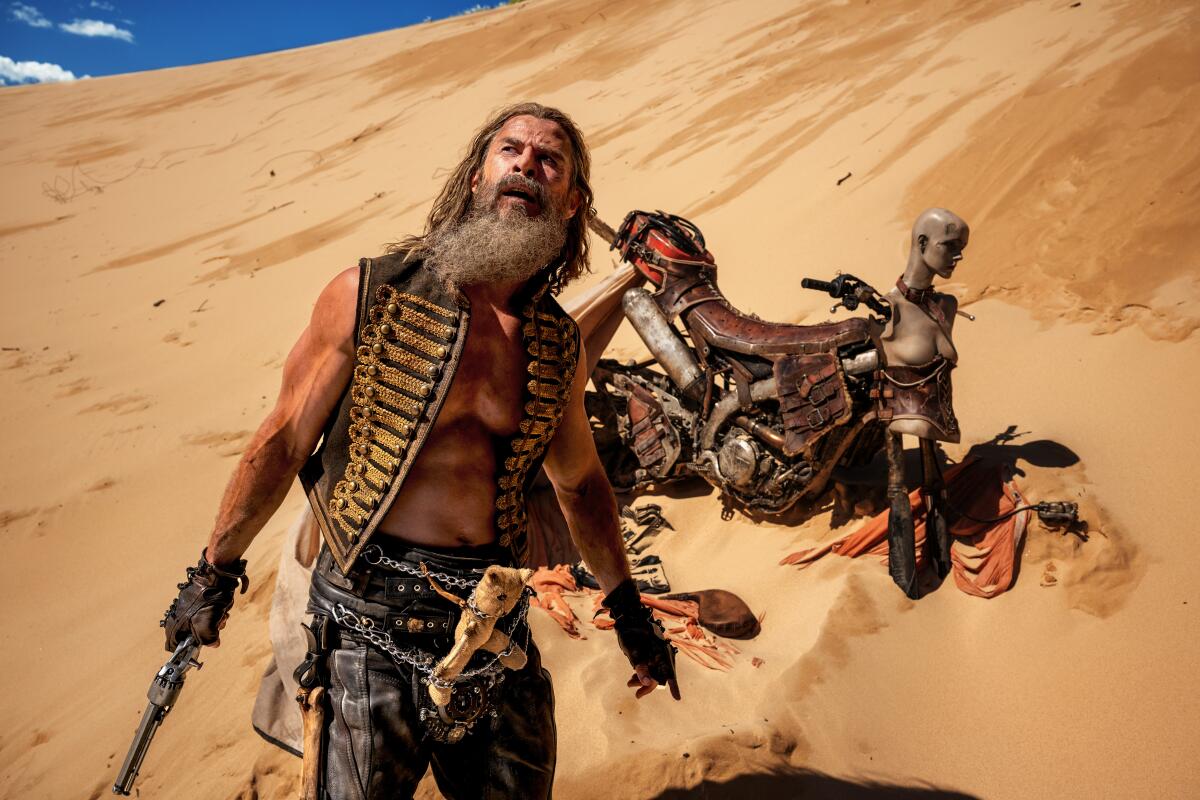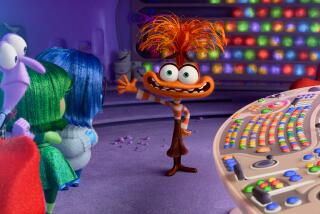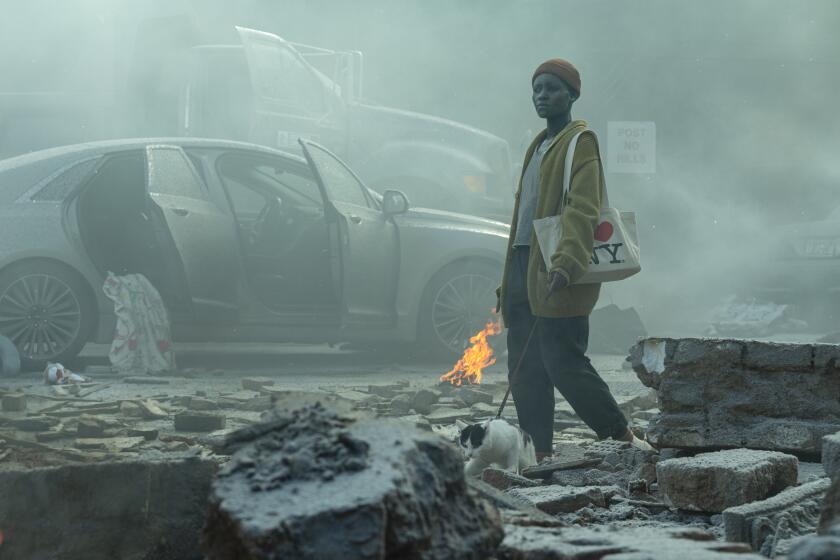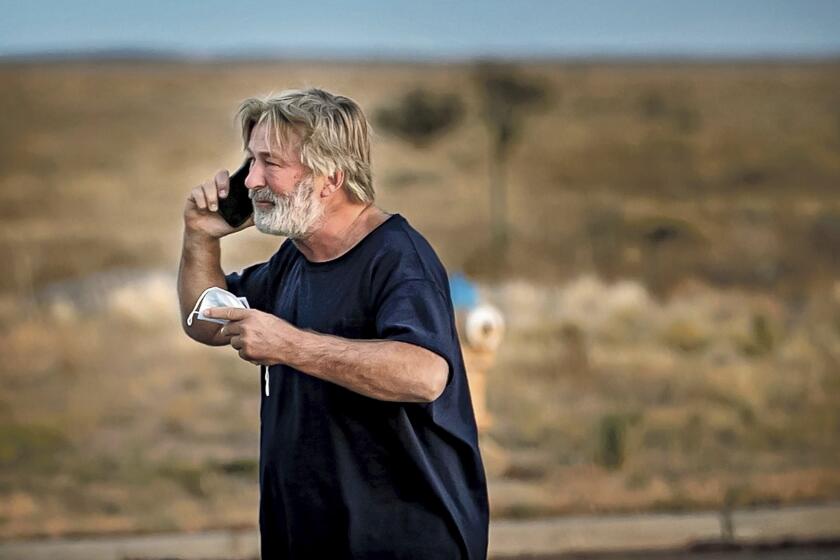Column: Hollywood’s high-pressure expectations game has created a box office doom loop

After days of morning to mid-afternoon gloom, Memorial Day bloomed bright and early over Los Angeles — the clouds blown away, no doubt, by the powerful current of sighs, groans and complaints generated by the weekend’s disappointing box office.
Turns out Hollywood executives do believe in magic. Somehow they thought that forcing six months’ worth of strikes by writers and actors last year would come at no cost to this year’s summer movie season.
That in 2023, with the film industry still in recovery from the COVID-19 shutdown, it would be perfectly fine to allow writing and production to come to a grinding halt again. Especially if it meant saving some dough in the short run and burning off a few ill-advised deals while the folks with the multimillion-dollar salaries tried to figure out what to do about all these dang streaming services they rushed to create.
Meanwhile, outside the billionaire bubble, the delays, particularly of big-budget tentpole movies, scrambled this summer’s slate and left theaters in the lurch. Yet everyone appears shocked, shocked, to find that this has real-life implications for ticket sales. This was the lowest Memorial Day box office haul in almost 30 years: What went wrong?
Putting aside the larger philosophical question — if the studios that make movies don’t care if months go by without movies getting made, why should the general public suddenly bestir itself just because there’s a long weekend? — one has to wonder about the problem of reasonable expectations.
As in Hollywood not having them.
I don’t know what bean-counting genius thought that “The Fall Guy,” a sweet if highly energetic rom-com based on a mildly successful early-’80s TV series, could pass for the sort of early Marvel-ish blockbuster Hollywood has increasingly built its summer ticket sales upon. Nor do I understand the magical thinking that put such extraordinary expectations on a holiday weekend anchored by “Furiosa: A Mad Max Saga,” a prequel for a nearly 10-year-old film and the latest in a 30-year-old franchise, and “The Garfield Movie,” which is based on a cartoon that appears in newspapers and achieved peak cinematic popularity 20 years ago.
In cinemas “Furiosa” and “Garfield” joined “Kingdom of the Planet of the Apes,” which managed to own its May 12 opening weekend by virtue of having absolutely no competition, and John Krasinski’s animated “If,” which seems to be doing OK mainly because no one saddled it with self-destructively high estimates.
Honestly, when I glanced through this weekend’s listings I felt as if I were experiencing a time-space glitch — if “Mad Max,” “Garfield,” “Planet of the Apes” and even “The Fall Guy” were still in play, had my life even happened? Was there a “Bionic Woman” movie showing somewhere? A big-screen “Love American Style?”
I am as nostalgic as the next not-quite Boomer/not-quite Gen Xer and sure, “Top Gun: Maverick” was a huge success, but as “Indiana Jones and the Dial of Destiny” proved last year, no one really wants to live in a multiplex version of Pottersville, where every thing is as it was only a little bit different.
For the record, my husband and I chose “Furiosa,” which was pretty much how I felt after I emerged; as The Times’ Joshua Rothkopf wrote, “It takes the fun out of survival.” (Although I am aware of the climate-crisis implications, between this, “Dune: Part Two” and even parts of “The Fall Guy,” there’s too much sand flying around. But maybe that’s just me.)
Even without the strike, this summer’s box office was destined to be a bit of a letdown — you can’t capture the glorious, “movies are back” lightning of last year’s “Barbenheimer” in a bottle. But by forcing the strikes, the studios ensured that it would be much worse. As in “moving the industry back at least an entire year, and reigniting all the issues and obstacles that the pandemic had intensified” worse.
Once again industry watchers are bemoaning the increased cost of tickets and concessions, the shortened time between theatrical and streaming release, the glut of content provided by streaming services and the pandemic-enforced habit of just staying home.
Add to that the difficulty of marketing films when the traditional-form television commercials have vanished with linear television, and of moving to a personalized digital world where the grandeur of filmmaking is compressed to a window on a palm-sized screen that can be dismissed with the swipe of a finger.
Is it any wonder that we get a half-hour of trailers before any movie these days? (And even that doesn’t work because assigned seating makes it all too easy for viewers to skip the trailers.)
Just knowing what is playing, when and where has become more of a chore.
Not so long ago, people could open a newspaper like The Times and find movie ads, complete with lists of where each film was playing, alongside voluminous listing sections. Now, in this DIY digital age, potential audience members can easily do a “near me” search, but they need to know what movies are actually out to do this. (And they need to know it quick, because films often leave theaters after a few weeks.)
As a member of The Times’ entertainment team, I certainly would love to see a return of listings, and the ads that pay for them, but that does not appear to be in anyone’s future.
Nor do price cuts at the box office and concession counter, where a family of four can easily spend more than $100 (though for regular moviegoers the AMC and Regal passes do provide significant savings).
But as “Barbenheimer” proved, people will get off their sofas, find parking and shell out for popcorn if the movies make it worthwhile. And the one thing this post-strike moment does offer is a way to figure out how to do that better.
The current constriction among streaming services could offer movies a chance to elbow their way back into the new and varied content zone that television has dominated for the past decade, but only if studios start taking more chances on new and varied content.
Another “Planet of the Apes,” “The Garfield Movie” and a “Mad Max” prequel — even one that premieres, to mixed reviews, at Cannes — do not register as new and varied content.
Nor do “Inside Out 2,” “Bad Boys: Ride or Die,” “A Quiet Place: Day One,” “Deadpool and Wolverine” and “Despicable Me 4,” though many are predicting that these will put more butts in air-conditioned seats as the summer rolls on.
Long criticized in terms of diminishing artistic returns, franchise films have become a box office staple — serialized storytelling, i.e., television, for the big screen. And as with the old model of television, studios are increasingly tying success to a very small viewing window. Opening weekend has become the cinematic equivalent of a pilot, and those movies that don’t do well in their first two weekends often are written off as failures, with all the ensuing bad press.
Meanwhile, the film industry has almost completely ceded the kinds of stories once told in mid-budget films — which often had smaller opening weekends but greater staying power — to television.
Now, as the streaming-disrupted television industry figures out a way forward — moving perhaps to the more traditional, long-running, sitcom and procedural models — it may be time for the film industry to make fewer high-stakes blockbusters and more mid-budget films.
Even with the recent closure of numerous theaters in Southern California and across the country, there are still a lot of seats to fill. The go-go megaplex boom of the late ’90s and early ’00s created theaters the size of small airports, with theaters sometimes housing more than two dozen screens. In recent years, many of those screens are showing the same four or five movies; if one or two of those films does not find a big audience, that’s a lot of empty seats that could be filled by non-blockbuster films — perhaps made by TV writers, producers and actors now casting around wildly for work.
Pie-in-the-sky thinking, no doubt, but however Hollywood chooses to do it, the pressure to drag millions of people into theaters over the course of two or three days to see one or two films must be relieved. Sequel, prequel, reboot or (gasp) original concept, not every film should be forced to make half a billion dollars, or even half its total budget, on opening weekend to be considered a success.
“The Fall Guy,” which was quickly dubbed a herald of woe for this summer’s box office, is closing in on the $150-million mark in global sales, despite moving to streaming. Not a huge success for a film budgeted at $138 million, but not a flop. With its unusual combination of rom-com and big expensive fight/chase scenes, the issue may be more with the film than the state of moviegoing. Setting it up as a test balloon for summer 2024 did not do it any favors; those who did not see it almost immediately after it opened were treated to headlines announcing not just its failure but the pall it might cast over the future of movies throughout eternity.
That’s a lot for Ryan Gosling and Emily Blunt to carry.
Six months of strikes is going to cost studios, theater owners and advertisers a lot of money — there was never any way around that, no matter what the Assn. of Motion Picture and Television Producers had to say during negotiations. If studio executives were willing to lose their part of that money for a chance to reset the industry, then they’d better get to resetting. But expecting a “Mad Max” prequel and a “Garfield” sequel to somehow save the day is a way bigger flop than “The Fall Guy.”
More to Read
Only good movies
Get the Indie Focus newsletter, Mark Olsen's weekly guide to the world of cinema.
You may occasionally receive promotional content from the Los Angeles Times.







